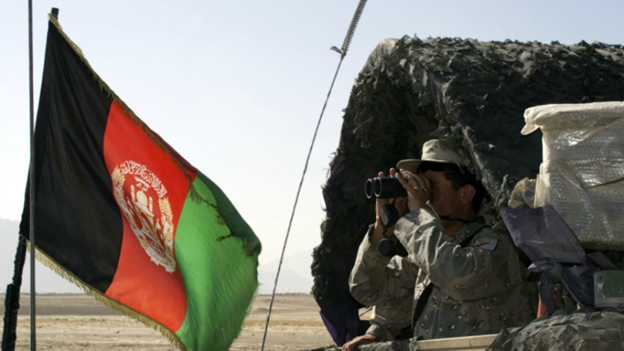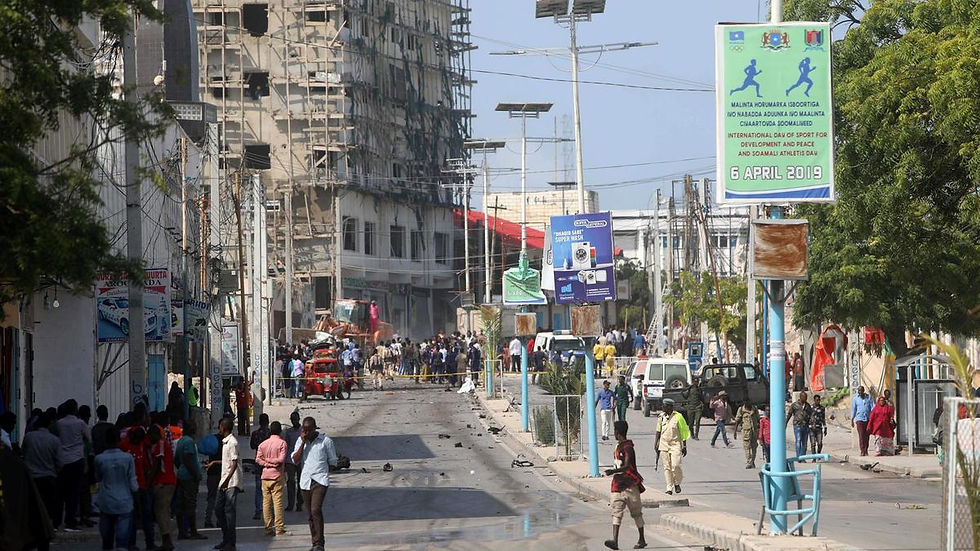Do we live in a multipolar world?
- Tania Rey García

- Dec 5, 2020
- 8 min read
Updated: Jul 10, 2021
The economy has been the engine of the world and the main strategic aspect in geopolitics since ever. The relationship between countries has been transformed due to economic reasons since ancient times. The acquisition of territories, raw materials, and other factors of production such as slaves, have been the priority of the hegemonic powers to lead the world by converting the rest of the "participants" into followers or economically dependent on them.
We have an impressive example of colonization between the 16th and 20th centuries. During this time the British Empire became the "owner" of a quarter of the world's population and a fifth of the world's territories, the largest empire in modern history.
Therefore, due to these aspirations for world leadership, the Great Wars and other armed conflicts appeared as a consequence of this superpower’s aim of gaining power, giving way to a new geopolitical era transformed by the consequences of these conflicts.
Thus, during the Cold War (1947-1991) we had a bipolar world led by the United States and the Soviet Union, lasting until the disappearance of the latter. As a consequence of the extinction of the USSR, the world became unipolar led by the United States. However, some years later this situation changed after the appearance of new competent powers, the so-called BRICS: Brazil, Russia, India, China, and South Africa, with a greater power economy, and therefore gaining influence at the international level.
The term “world superpower”
“A country that has the ability to project dominant power and influence around the world, and sometimes, in more than one region at the same time” acquires the term of "Superpower", according to Alice Lyman Miller, professor of National Security Affairs.
The term "world superpower" acquired greater recognition since 1943, when the United States, Great Britain and the Soviet Union agreed to negotiate the future or the fate of the world during the Yalta and Potsdam conferences after World War II (1939-1945).
If we search for the term "first world power" we can see many analysts and authors putting the United States at the forefront. A country that holds first place in terms of military, economic wealth, and technological development. Instead, this is a very ambiguous term, since as we have seen, China is recently competing with the "western titan" in economic and technological terms. Therefore, we cannot categorically attribute this term just to the US as the first superpower.
What does it mean “multipolar world”?
Multipolarity is defined by the multitude of sides, aspects or poles, as its name suggests. Therefore, a multipolar world differs from a bipolar (two poles) in the variety or multitude of influencing powers. This system is based on the hegemony or leadership of a few countries on which the rest of the world powers depend, either economically or in other aspects: military, religious or cultural. Hence, is it true that we live in a world led by certain specific powers?
Despite the statement "we currently live in a multipolar world", power is so divided between "sub-actors" that it is very difficult to group these countries. Therefore it is debatable to designate the world as "multipolar". Some experts speak of a "globalized" or "multilateral" world, and that is in fact how we find the world today. However, the term "globalization" does not specify leadership. (What's the difference between "multipolar" and "multilateral"?)
Which aspects determine world leadership?
The old world centres of power have been reorganized around new "monopolies", ensuring control of technologies, natural resources, international financial flows, communications, and production of weapons of mass destruction. This issue widens seriously polarization on a global scale.
However, today international leadership and influence go beyond economic power. Despite the significant loss of economic influence by the US in the international sphere, this power has managed to impose other aspects such as its culture, fashion, its way of thinking and negotiating, and even entertainment and religion around the world. Without overlooking the language, that is becoming more important over time. Therefore, we can conclude that in the last twenty or forty years, Europe and the rest of the world have been considerably "Americanized".
As a consequence of the influence of these aspects in the rest of the world, the domination of America in terms of culture and society is appreciated. Furthermore, this momentum has been led by globalization, which grows every day as it reaches new corners in the world such as those within the emerging economies. For that reason, this domination strengthens the US position in the race for world leadership.
How has world leadership changed throughout history?
Since the sixteenth century, plural imperialism ended up restructuring the world. The Europe of the 16th century saw the birth of two great world powers: Spain and Portugal, thanks to their explorations and conquests (the first to the west with the Discovery of America, and the second power to the east), managed to spread by sea and get to share the world through the Treaty of Tordesillas. At the end of the century, with the union of both crowns, the most colossal empire that ever existed under Felipe II was created.
The strengthening of the great kingdoms continued with the consolidation in the European panorama of kingdoms such as Castile, Aragon, France and England. As well as the Holy German Empire that will bring together the numerous small German principalities, and the Russia of Tsar Ivan III the Great who unified the various Russian kingdoms. These monarchies created centralized administrations for better control and diplomatic relations between states, configuring a new way of doing politics.
In the economic aspect, trade increased following the routes of explorers and conquerors throughout the world. Thus, a powerful financial system was created to finance new government structures and commercial ventures. Indeed, the emerging bourgeoisie class trying to achieve more political and economic power became increasingly important.
In sum, we can affirm that during the 16th - 19th centuries there were empires led by European powers. These came to control a large part of the territories in the rest of the world. Although the former Austro-Hungarian, Russian and Ottoman absolutist empires were also part of these “political elites”.
Great Britain, France and Germany, became the great liberal and democratic powers of Europe from 1870 to 1914. However, World War II (1939-1945) broke out this year and culminated in a major transformation: The collective imperialism of the so-called “Triad” among the United States, Europe and Japan.
After their victory, together with the triple entente in the First World War, the United States was recognized as a new possible hegemonic power. American industrial growth was such that before the end of the 18th century its economy was already producing more than the British one. However, it was not considered one of the great powers yet, since they had little military and political influence.
After World War II (1939-1945), the United States and the Soviet Union consolidated as superpowers and divided the world into two related blocs, facing the Cold War for the next 50 years. Finally, in 1991 the dissolution of the Soviet Union left the United States as the sole superpower, ending with the bipolar world.
Despite the European Union has been considered a superpower, this position was seriously threatened by the world crisis and the increase of emerging economies, as in the case of China, that is today considered a superpower by different sources.
Currently, according to several analysts, when it comes to analyzing the international system as a whole, the existence of three great global powers can be recognized: the United States, Russia, and the People's Republic of China. All of them with military capacity for global action, important economic power and significant nuclear capacity.
Despite the different geopolitical theories, we can determine in general terms that these three are the world's superpowers today. However, the rest of the so-called BRICs, Brazil and India began to be candidates for conforming these elites, without taking into account China and Russia, that are already considered among the elite powers.
Which countries are currently leading the world?
Since the end of the Cold War (1947-1991) and its bipolar world, the relationship between the hegemonic West and that conglomerate of emerging powers called “BRICs”, is one of the main geopolitical highlights in the world today. This tension stems from a situation in which the West wants to maintain its dominance alone, or with the minimum of concessions possible to the new actors. The Western bloc looks for submitting the Eastern power if possible to their vassalage, while the emerging ones claim their place and the reform of the institutions of global governance to assert more control.
Therefore, it is assumed that the world that awaits us and that is being developed, will be multipolar. In other words, the system will have in the future certain power centers with greater or lesser levels of tension, balance, and consensus among them. A system that has not been completed yet.
India and South Africa have hardly any autonomous role in the world. India is embroiled in its dangerous conflict with Pakistan (dangerous because Pakistan looks so much like a failed state and both contenders are nuclear powers). In the world sphere, the question is whether India, which buys weapons from Russia and has disputes and misgivings with China, will allow itself to be involved in a regional alliance led by the United States against China.
Russia, on the one hand, had established under Boris Yeltsin's rule (1991-1999) a fundamental internal order that has stopped the degradation of social life. In the military sphere, Vladimir Putin is currently dealing with NATO, and in the political one, he is trying to improve the institutions’ system founded by Yeltsin. However, the political and economic system contains many contradictions and weaknesses, with a little alternative in elections that generate internal protests and economic sanctions from the West harming its social elite.
As for the European Union, it is characterized by disintegration. It is suffering an identity crisis in which nationalism is winning against the possible “federal integrity”. Despite that, the intention of the new President of the Commission, the German Ursula von der Leyen, is to position the EU as an "autonomous world power among the United States and China", thus achieving a place in international geopolitics' elites.

Ursula Von der Leyen, 13th President of the European Commission since December 1st, 2019.
Last but not least, we have China as the only candidate that presents conditions to consolidate its power. On the other hand, with this general picture of damaged aspirants, rather than a multipolarity, a new future bipolarity is envisioned, this time between the US and China. These two powers are locked in a commercial battle to achieve greater economic power or hegemony, trying to turn the opposite candidate into a subordinate.
Therefore, after a brief study of the current world leaders, we may perceive the trouble defining the World as ”multipolar”, as mentioned all the time in international forums and that so many experts determine.
Power is not concentrated nor determined. There are many sources of power with different types of influences. We are in a moment of transition since the new multipolar world has not arrived yet and the old one has not left either. “In twenty years we have seen the world changing three times. The fall of the Berlin Wall completely transformed bloc politics. Then, we moved to a unilateral system with a hegemonic power: the United States. And now we are moving, without having arrived yet, towards a multipolar and multilateral system”. According to the sociologist Manuel Escudero, there are various poles of power in the world (China, the United States, Europe, Russia ... etc.) and a clear multipolar regime whose emergence process has not finished yet.
Tania Rey García


Comments